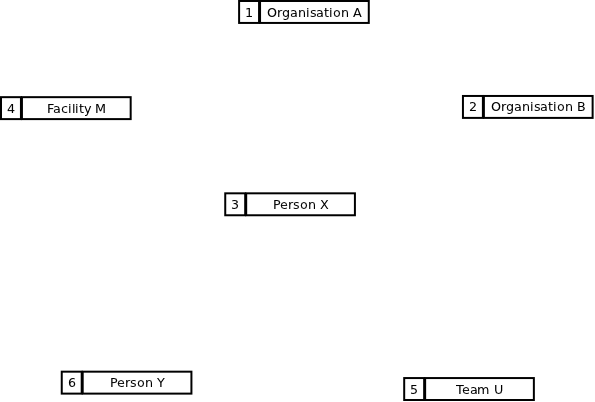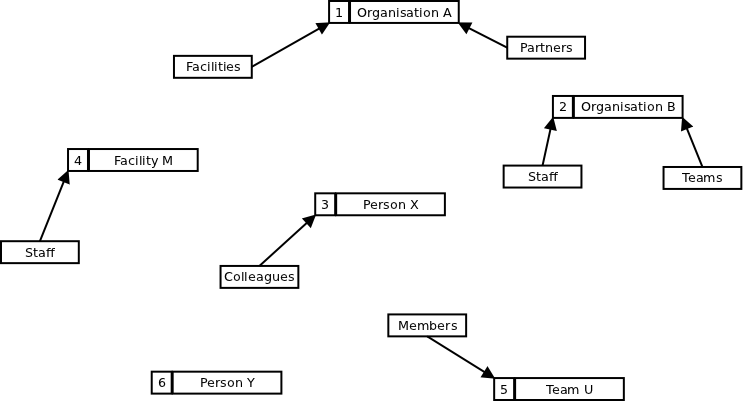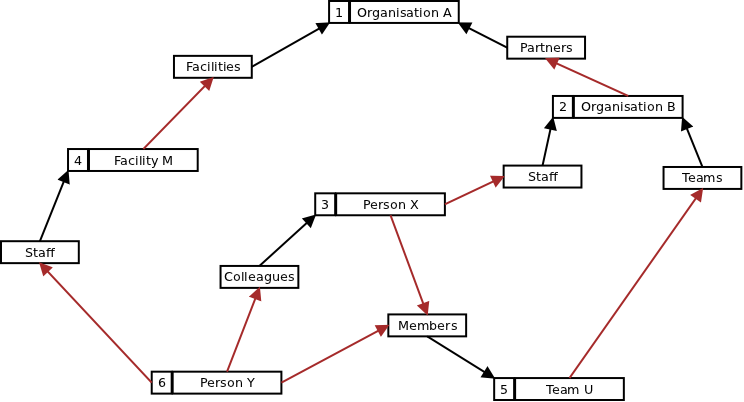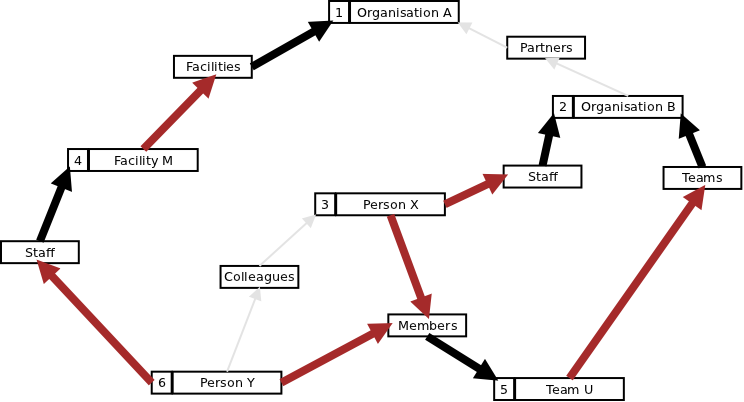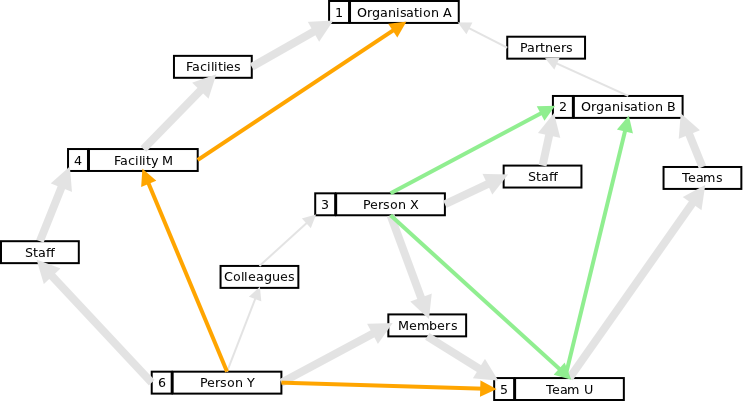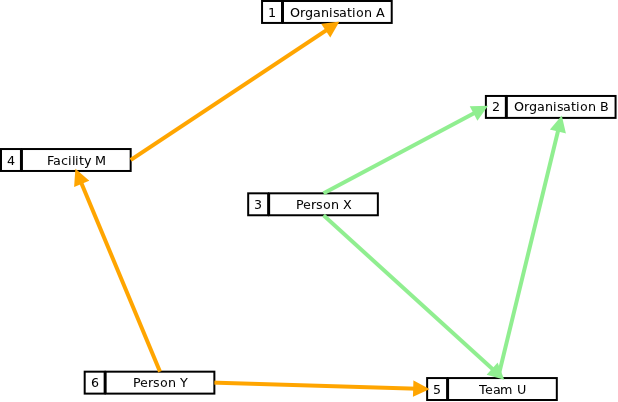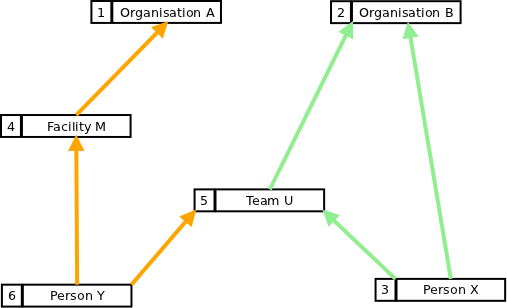| Version 2 (modified by , 14 years ago) ( diff ) |
|---|
Table of Contents
Person Entity Model
The Person Entity Model defines a framework for the modelling of person-related entities like organisations, teams and other groups - and of course persons. It includes a generic model for affiliation, which shall be introduced here.
Introduction
We start with an obviously simple (read: small) set of person entities:
Each of these entities can define a number of roles which affiliated entities can have:
Now we link the respective entities to the roles, which defines an already pretty complex relationship network:
Some of these relationships define a hierarchy, while others don't:
This hierarchy defines ancestor paths among the person entities:
If we remove the roles, this becomes more obvious:
Now we can make the actual "hierarchy" visible by moving each entity to a certain "hierarchy level":
As you can see, "Person Y" belongs to two different organisations here - with two different ancestor paths.
Attachments (7)
- pe_hierarchy1.png (9.8 KB ) - added by 14 years ago.
- pe_hierarchy2.png (22.6 KB ) - added by 14 years ago.
- pe_hierarchy3.png (36.0 KB ) - added by 14 years ago.
- pe_hierarchy4.png (37.4 KB ) - added by 14 years ago.
- pe_hierarchy5.png (45.4 KB ) - added by 14 years ago.
- pe_hierarchy6.png (23.9 KB ) - added by 14 years ago.
- pe_hierarchy7.png (17.2 KB ) - added by 14 years ago.
Download all attachments as: .zip

